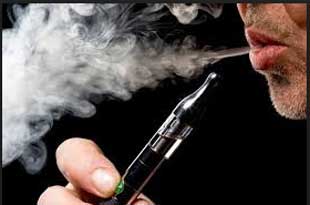- Home
- Editorial
- News
- Practice Guidelines
- Anesthesiology Guidelines
- Cancer Guidelines
- Cardiac Sciences Guidelines
- Critical Care Guidelines
- Dentistry Guidelines
- Dermatology Guidelines
- Diabetes and Endo Guidelines
- Diagnostics Guidelines
- ENT Guidelines
- Featured Practice Guidelines
- Gastroenterology Guidelines
- Geriatrics Guidelines
- Medicine Guidelines
- Nephrology Guidelines
- Neurosciences Guidelines
- Obs and Gynae Guidelines
- Ophthalmology Guidelines
- Orthopaedics Guidelines
- Paediatrics Guidelines
- Psychiatry Guidelines
- Pulmonology Guidelines
- Radiology Guidelines
- Surgery Guidelines
- Urology Guidelines
"Popcorn lung" after vaping in youth: CMAJ Case Report

Canada: E-cigarettes have been in controversy lately for its damaging effect on lungs and causing deaths as well. A new case report published in the Canadian Medical Association Journal describes the occurrence of a new type of lung injury due to vaping. The researchers report the case of a 17-year-old male who developed vaping-associated bronchiolitis obliterans, a form of which is known as "popcorn lung."
"The Canadian youth may be the first documented case of a new form of damage from vaping products," write the authors. "This provides new evidence on forms of lung injury that can result from vaping."
Although electronic cigarettes (e-cigarettes) were initially marketed as a potential smoking-cessation aid and a safer alternative to smoking, the long-term health effect of e-cigarette use (“vaping”) is unknown. Vaping e-liquids expose the user to several potentially harmful chemicals, including diacetyl, a flavoring compound known to cause bronchiolitis obliterans with inhalational exposure (“popcorn worker’s lung”).
The case was of a 17-year-old male with a history of heavy, daily vaping presented with cough, dyspnea, and fever. Tests for infectious agents were negative. Computed tomography revealed a diffuse tree-in-bud pattern, which differs from what has been observed in patients with e-cigarette, or vaping, product use associated lung injury (EVALI).
The patient developed refractory hypercapnia and required extracorporeal membrane oxygenation, but he improved with corticosteroids. He was hospitalized for 47 days and still had impaired lung function at 4 months.
Read Also: Vaping leads to respiratory failure in teenager- a case report
Recently, several cases of "e-cigarette or vaping product use-associated lung injury" (EVALI) have been described. However, this patient presented with a new type of vaping-related injury that is similar to "popcorn lung," a condition seen in workers exposed to the chemical flavoring diacetyl, an ingredient used in microwave popcorn. If inhaled, the chemical causes bronchiolitis, which is characterized by the small airways of the lungs becoming inflamed and obstructed.
"This case of life-threatening acute bronchiolitis posed a diagnostic and therapeutic challenge," write the authors. "Given the patient's intense vaping exposure to flavored e-liquid and negative workup for other causes of bronchiolitis, we suspected that bronchiolitis obliterans might have been developing in this patient as in microwave popcorn factory workers exposed to occupational inhalation of diacetyl."
Read Also: Vaping, or e-cigarette smoking causes lung disease in healthy people: NEJM Study
The authors referred the patient to a lung transplant center for further evaluation and reported the case to authorities (Government of Canada's consumer product incident report system) as an adverse reaction to a consumer product, e-cigarettes. They also alerted Health Canada for further investigation.
The youth narrowly avoided the need for a double lung transplant, but now has evidence of chronic damage to his airways. He is still recovering from his lengthy stay in the intensive care unit and is abstaining from e-cigarettes, marijuana, and tobacco.
The case report, "Life-threatening bronchiolitis related to electronic cigarette use in a Canadian youth," is published in the Canadian Medical Association Journal (CMAJ).

Disclaimer: This site is primarily intended for healthcare professionals. Any content/information on this website does not replace the advice of medical and/or health professionals and should not be construed as medical/diagnostic advice/endorsement or prescription. Use of this site is subject to our terms of use, privacy policy, advertisement policy. © 2020 Minerva Medical Treatment Pvt Ltd